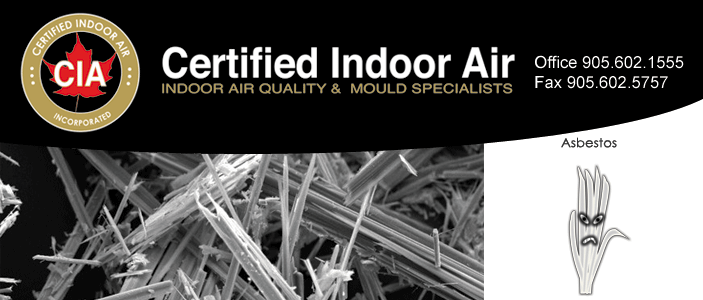If the asbestos material is in good shape and will not be disturbed, do nothing! If it is a problem, there are two types of corrections: repair and removal.
REPAIR usually involves either sealing or covering asbestos material.
Sealing (encapsulation) involves treating the material with a sealant that either binds the asbestos fibres together or coats the material so fibres are not released. Pipe, furnace, and boiler insulation can sometimes be repaired this way. This should be done only by a professional trained to handle asbestos safely.
Covering (enclosure) involves placing something over or around the material that contains asbestos to prevent release of fibres. Exposed insulated piping may be covered with a protective wrap or jacket.
With any type of repair, the asbestos remains in place. Repair is usually cheaper than removal, but it may make later removal of asbestos, if necessary, more difficult and costly. Repairs can either be major or minor.
Major repairs must be done only by a professional trained in methods for safely handling asbestos.
Minor repairs should also be done by a professional since there is always a risk of exposure to fibres when asbestos is disturbed.
Doing minor repairs yourself is not recommended since improper handling of asbestos materials can create a hazard where none existed. If you nevertheless choose to do minor repairs, you should have as much information as possible on the handling of asbestos before doing anything. Contact your state or local health department or regional EPA office for information about asbestos training programs in your area. Your local school district may also have information about asbestos professionals and training programs for school buildings. Even if you have completed a training program, do not try anything more than minor repairs. Before undertaking minor repairs, carefully examine the area around the damage to make sure it is stable. As a general matter, any damaged area which is bigger than the size of your hand is not a minor repair.
Before undertaking minor repairs, be sure to follow all the precautions described earlier for sampling asbestos material. Always wet the asbestos material using a fine mist of water containing a few drops of detergent. Commercial products designed to fill holes and seal damaged areas are available. Small areas of material such as pipe insulation can be covered by wrapping a special fabric, such a rewettable glass cloth, around it. These products are available from stores (listed in the telephone directory under "Safety Equipment and Clothing") which specialize in asbestos materials and safety items.
REMOVAL is usually the most expensive method and, unless required by state or local regulations, should be the last option considered in most situations. This is because removal poses the greatest risk of fibre release. However, removal may be required when remodeling or making major changes to your home that will disturb asbestos material. Also, removal may be called for if asbestos material is damaged extensively and cannot be otherwise repaired. Removal is complex and must be done only by a contractor with special training. Improper removal may actually increase the health risks to you and your family.4

